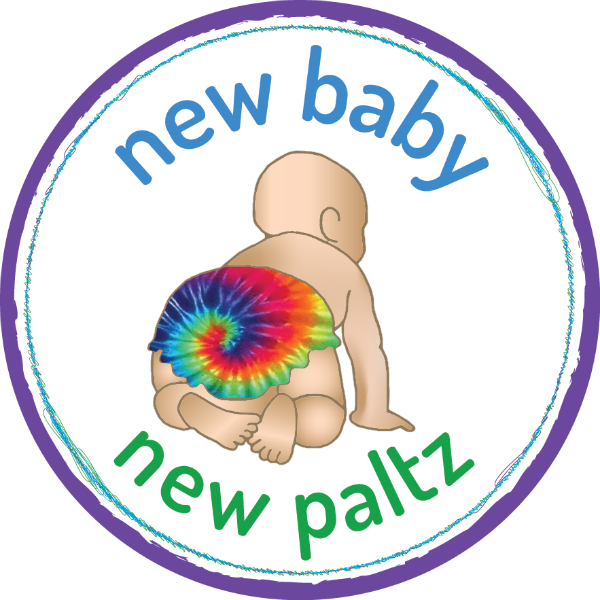Mothering

Mothering
What Do I Register For on my Baby Registry?
by Donna Bruschi
on Apr 08 2024
Ask any parent and you will get a confusing list of "must haves" and "must avoids" This is because we all have personal preferences, and guess what? So does your baby! So how do you buy a gift for a baby you've never met? And equipment for a game you've never played? Here's a place to start:

Mothering
by Donna Bruschi
on Dec 22 2022
The commotion was suddenly halted by a sharp cry coming from our bedroom. At this point Rita, a very able-bodied walker, whom I had watched just moments ago wander through the doorway into our room, now stumbled back out, crying and holding her hand to her eye.

Mothering
The Best Gift....Especially in a Pandemic
by Donna Bruschi
on Nov 24 2021
Holidays can be a hard time for anyone, but 2020 may be the worst of all.
It's Thanksgiving Eve.
According to NYS Governor, Andrew Cuomo, in his November 23, 2020 press conference, the best way to show your extended family you love them, is to stay home. NYS has a mandated limit of 10 person get-togethers. We are supposed to eat outdoors, wear masks, and shorten the visits.

Mothering
What Solids Do I Start My Baby On?
by Donna Bruschi
on Aug 07 2021
When your 5 or 6 month old baby is watching you eat, gesturing for food, and sitting up (or almost), you are probably asking this question.
But, you're confused by popular feeding advice.
"Give them iron-fortified rice cereal." suggest many grandparents and pediatricians. Your friend Hannah's baby loves her homemade purees. Auntie Dani dropped off a bag of jarred and squeeze pouches of commercial "baby food." And, all over the internet, you keep stumbling over "baby-led weaning."
Rice cereal, the headless dinosaur is still thrashing its deadly tail of malnutrition.
The call to feed your baby rice cereal, as the magic bullet to fill them up and make them sleep better, is brought to you by the same people, who complain that Chinese food doesn't fill you up because... "It's all rice."
Same food.
Polished white rice is not filling, it's not nutritious and it's not a good first baby food. On the other hand, whole grain brown rice is an acceptable first food.
Your BFF Hannah's Homemade Purees
Gotta love Hannah and her insatiable drive to nurture and nourish. Homemade purees are generally nutritious, and nutrient dense. They meet the need for baby food, in as a natural state, as possible. And they can make up a part of your baby's first foods. But by 6 months, babies need texture. Purees are made for 2-6 month old formula-fed babies who have maxed out their daily formula intake.
Auntie Dani means well. She sure does.
Baby food is EXPENSIVE on a pound-for-pound basis. And her contribution to your budget is well-meaning and generous. And convenient. Toss those packs in your diaper bag, and watch your baby happily chow down on them, each time you to forget the "real lunch" you packed for your baby... and left on the counter.
Which brings us to baby-led weaning.
Baby-led weaning (BLW) is a confusing phrase in the US. "Baby-led" is clear enough, but 'weaning' is confusing, when used in this context. Americans generally use weaning to mean ENDING breast or bottle feeding. In baby-led weaning, weaning is used with the original meaning, of ADDING FOOD, to a baby's milk diet.
Baby-led weaning means that babies start eating solid foods by picking up food and feeding themselves. They learn how to eat by watching, taste, texture, trial and error.
Real babies need real food.
In whatever form you decide to start, use nutrient dense "real food" - meat, vegetables, fruit & whole grains. Feed your baby foods in as close to their natural state as possible. Food on the table should mostly look like the original plant or animal meat.
Apple sauce, avocado, banana, cooked beans, blueberries, broccoli, hamburger, diced chicken, mashed or shredded carrots, chopped mango, french cut green beans, oatmeal, brown rice, quinoa, sweet potato and diced pears are all common first foods!
Some people use whole grain oatmeal as a base food and add fruits and vegetables to that. Some people start with all veggies, followed by fruits, in the hopes that their baby won't develop a preference for sweet foods. While there seems to be some merit to this theory, a broad diet using all the flavors is much more interesting than a "mono" diet.
Your baby's diet needs yoga!
Ayurvedic (from India) cooking classifies salty, bitter, sour, astringent, sweet and pungent as "the six tastes." Work to include a little bit of each taste, in every meal and your baby's senses will be satisfied. Everyone has preferences, including your baby, and introducing a variety of tastes helps to balance strong preference. Ayurveda also recommends a mix of wet and dry, cold and warm, light and heavy foods.
Introduce a variety of textures and tastes. Puree was developed and marketed in a time when formula-fed babies started foods at a younger age and needed drinkable food. At 6 months, babies can start with semi-soft, chunky, wet and dry foods. Watch when your baby eats- stay nearby- they will gag and cough! As long as they are coughing, they are OK. They will figure it out and learn to eat without gagging.
By the middle of the first year, most babies are very interested in chewing and biting. Biting and gumming food strengthens their jaw and flattens their palate, which helps to make enough room for teeth. Different textures keep meals interesting.
Boxed and canned food is less nutritious and more expensive.
Most boxed and canned food has lost its nutrition in an effort to keep it shelf stable. In addition, it is exposed to plastics which are absorbed into the food. These plastics are often known endocrine disrupters. We know these are bad, but we don't know how bad, yet.
Corn is $1 a bag in the frozen food section and $4 a bag as tortilla chips. Boxed cereal costs $5-10 per pound and contains sugar, and whole grains are $1-5 per pound and have complex carbohydrates.
What NOT to eat is important.
You can feed any food except honey, and foods you or other family members, are allergic to. Raw honey may have botulism spores which is harmless to children and adults, but babies have a weaker immune system and are vulnerable to botulism poisoning. Curiously, this also include the popular Honey Nut Cheerios, which are not processed at high enough heat to kill botulism.
Artificial food colors and nitrates in processed meat aren't good for babies, either.
While you are breastfeeding, there is no need for dairy foods in the forms of yogurt, cheese, or liquid milk. Cow's milk nutrients are mostly the same, but in different proportions. Your milk is the perfect balance of protein, fat and sugar for a human baby or toddler.
On a related note, grain and nut milks are not that nutritious, and are highly processed. Give your child the nut or grain instead, and a glass of water.
When to mix it up?
Feed one food for 3 to 4 days, then add a new food. If there are any allergies, then you know which food is causing it. Food reactions can take many forms. It might be sleeplessness or irritability. Rashes are common and may look like flushed red cheeks, a bulls-eye around the anus, chapping around the mouth, or a pimply sandpaper rash that covers large areas of skin. Diarrhea, vomiting, and constipation are also common signs of a sensitivity or allergy.
During the first few months, focus on offering foods and helping your baby to experiment with new sensations and tastes. While some babies dive right in, others take their time. Continue breastfeeding about the same amount you always have and offer food as an add-on. Your baby will naturally imitate you and eat more food as they gain skill and knowledge.

Mothering
Super Market Odyssey - On A Quest for Whole Foods
by Donna Bruschi
on Jul 20 2020
The creation of a child is a time when many parents take a renewed interest in the content of their diets, often starting in the supermarket.
For a couple eating fast food-to-go, it may be their first time in a supermarket, with the intention of preparing a meal from food, not a box. Another couple might start buying Certified Organic food and "shopping the perimeter," where the fresh foods are. And others might pass by the supermarket, headed for the health food store.
Shelf stable and highly convenient
In the supermarket, you are surrounded by highly processed, salty and sugary foods with dairy, palm, soy and high fructose corn syrup, in nearly every product.
In the health food store, you are surrounded by highly processed, salty and sugary foods with sea salt, soy, coconut oil and organic cane sugar in nearly every product. In addition, you can also supplement your diet with bottles of natural vitamins and protein powders.
Both places specialize in food products, not foods.
They are causing a health crisis in our community. We are now overweight and malnourished at the same time.
Food products are altered by manufacturing, chemistry, or genetics to remove undesired parts like bran, moisture, living bacteria, or cholesterol from a food. Or they are fortified with extra protein, iron, Vitamin D, calcium or Omega 3’s, whether or not Mother Nature intended the original food to have those.
In addition, they are processed to have a shelf life of several months, or years. They are preserved. If you leave them outside on your deck, you will find they break down very slowly, if it all. Shelf life renders them nearly useless as nutrition for our finely tuned digestive systems.
Let's take a radical departure from all that, and take a ride down to the farm.
Unlike the produce at the health food store which gets flown in by jet from commercial farms in far away California, Washington, Mexico and New Zealand, this food gets wheel-barrowed or tractored in from the rolling hills surrounding the barn. This food has a small carbon footprint.
And here are your farmers - It might be a couple with two little kids, or a couple of Ag students learning the ropes via mentorship, or it might be an extended family with Greats, Grands, Aunts, Uncles, Parents, Cousins and Kids.
They might be Michelin gourmet with 3 kinds of mizuna and 11 kinds of basil, or they might be country with piles of tomatoes, peaches, plums, pears, zucchini and apples. They might be meat farmers with chickens, cows and pigs. Or dairy farmers with a line of sublime cheeses and ice cream. They might even be brewing, fermenting, or distilling their hops, grapes and barley into tasty beverages.
Whatever they grow, they nurture and nourish with their experience, love and their sweat.
Whole foods look like how they come out of the ground, off the tree, or off the animal. An apple is an apple, no wax, all different varieties, juicy, flavorful and literally MOUTH WATERING. ShopRite apples aren't like this and Apple Fruit Rollups are definitely not at all like this.
And I say, there are no bad vegetables, only bad cooks.
Once you've eaten fresh from the farm, it's easier to switch from overly processed ‘food products’ to a diet rich in whole foods. Small farms rotate crops. They use manure and compost. They work the land, feed the land and then, let the land rest, so that it remains productive.
Shopping from local farms reinforces community!
Not only does shopping at the farm help your diet, but it also places your family back into the local food chain. Your hard earned dollars promote sustainable agricultural practices and stay in the community where they support Little League, the school Drama Club and food programs like Second Harvest.
Living in the Hudson Valley of New York, we have a wealth of locally grown and raised foods. For our family's health and the strength of our local economies, let us all work together and make conscious food choices, supporting our local farmers.

Mothering
by Donna Bruschi
on Jun 29 2019
1
Spray bottles, baby pools, water tables and buckets of water all work for splashing and exploring the cooling and magical qualities of water. Is there an easier pastime than cooling oneself off on a hot day in a local pool, swimming hole, lake, or river? Our area is full of natural places to take a dip, wade and play.

Mothering
by Donna Bruschi
on May 25 2014
This is the time of year you will most likely find my family in one of two places: in the garden, or out by the grill. For me, nothing beats a long weekend morning filled with the work of tending to the garden, followed by a restful afternoon under a shady oak tree, then finally, finishing up the day by grilling our dinner and dining outdoors!
